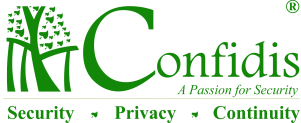- +918424866565
- info@confidis.co
- Mon-Fri 9am - 6pm
- Home
- Our Services

Compliance Shield
The entire basked of our services encapsulated under a Shared CISO service

Security Consulting
Avoid becoming a security statistic by implementing the right controls

HumanShield – Training & Awareness
Empower your people, your strongest defence against cyber threats
- Client Success Stories
- Research & Insights
- About Us
- Contact


